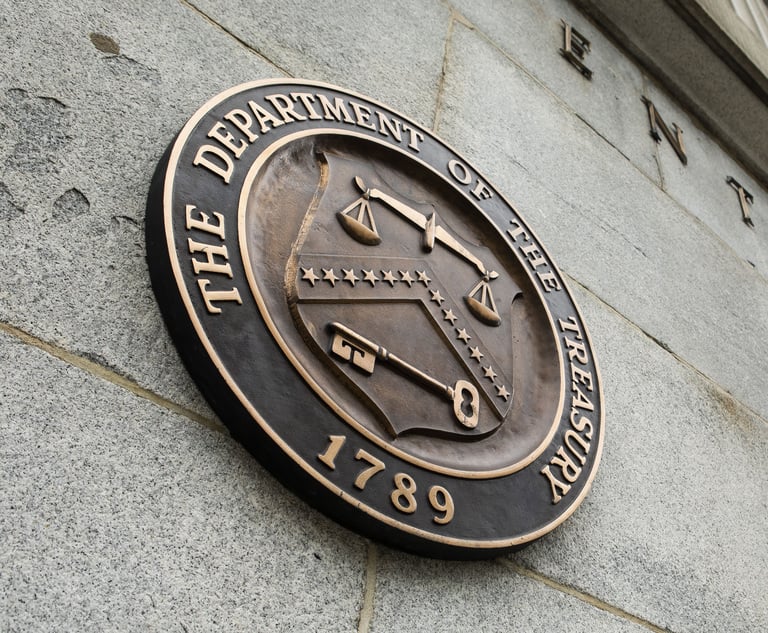 Michael Elkins of MLE Law. Courtesy photo
Michael Elkins of MLE Law. Courtesy photo The Role of Artificial Intelligence in Hiring: Legal Considerations and Best Practices
As AI increasingly influences critical decisions in recruitment, important legal questions arise, particularly regarding bias, discrimination, transparency and accountability.
October 14, 2024 at 11:27 AM
8 minute read
Board of ContributorsThe rapid adoption of artificial intelligence (AI) in recruitment has significantly transformed hiring practices. From automating candidate screening processes to using sophisticated algorithms to assess skills, AI promises to make hiring more efficient and potentially more objective. However, this technological shift is not without its challenges. As AI increasingly influences critical decisions in recruitment, important legal questions arise, particularly regarding bias, discrimination, transparency and accountability. This article explores the legal considerations surrounding the use of AI in hiring, focusing on emerging regulations, key risks for employers, and strategies to mitigate potential liabilities.
The Growing Use of AI in Hiring
AI is now a key tool in modern recruitment, offering companies the ability to streamline the hiring process, enhance candidate experience, and reduce the time and costs associated with traditional recruiting methods. Common applications of AI in hiring include:
- Resume Screening: AI can scan resumes and applications to shortlist candidates based on predefined criteria, significantly speeding up the process of candidate selection.
- Chatbots: AI-driven chatbots engage with candidates by answering basic queries, guiding them through the application process, and scheduling interviews.
- Video Interviews with AI Analysis: AI-powered tools analyze candidates' facial expressions, tone of voice, and word choice during video interviews to assess attributes such as communication skills and emotional intelligence.
- Predictive Analytics: AI systems can predict the potential success of a candidate by analyzing data from resumes, social media profiles, and past performance to assess their fit with the company's requirements.
While these technologies have the potential to eliminate some biases inherent in human decision-making, they also introduce new risks, like, among other things, biases within the AI software itself. As AI systems learn from historical data, there is concern that these tools may perpetuate or even exacerbate discriminatory practices.
NOT FOR REPRINT
© 2025 ALM Global, LLC, All Rights Reserved. Request academic re-use from www.copyright.com. All other uses, submit a request to [email protected]. For more information visit Asset & Logo Licensing.
You Might Like
View All

Don’t Forget the Owner’s Manual: A Guide to Proving Liability Through Manufacturers’ Warnings and Instructions
5 minute read

Trending Stories
- 1The Week in Data Jan. 24: A Look at Legal Industry Trends by the Numbers
- 2The Use of Psychologists as Coaches/Trial Consultants
- 3Could This Be the Era of Client-Centricity?
- 4New York Mayor Adams Attacks Fed Prosecutor's Independence, Appeals to Trump
- 5Law Firm Sued for $35 Million Over Alleged Role in Acquisition Deal Collapse
Who Got The Work
J. Brugh Lower of Gibbons has entered an appearance for industrial equipment supplier Devco Corporation in a pending trademark infringement lawsuit. The suit, accusing the defendant of selling knock-off Graco products, was filed Dec. 18 in New Jersey District Court by Rivkin Radler on behalf of Graco Inc. and Graco Minnesota. The case, assigned to U.S. District Judge Zahid N. Quraishi, is 3:24-cv-11294, Graco Inc. et al v. Devco Corporation.
Who Got The Work
Rebecca Maller-Stein and Kent A. Yalowitz of Arnold & Porter Kaye Scholer have entered their appearances for Hanaco Venture Capital and its executives, Lior Prosor and David Frankel, in a pending securities lawsuit. The action, filed on Dec. 24 in New York Southern District Court by Zell, Aron & Co. on behalf of Goldeneye Advisors, accuses the defendants of negligently and fraudulently managing the plaintiff's $1 million investment. The case, assigned to U.S. District Judge Vernon S. Broderick, is 1:24-cv-09918, Goldeneye Advisors, LLC v. Hanaco Venture Capital, Ltd. et al.
Who Got The Work
Attorneys from A&O Shearman has stepped in as defense counsel for Toronto-Dominion Bank and other defendants in a pending securities class action. The suit, filed Dec. 11 in New York Southern District Court by Bleichmar Fonti & Auld, accuses the defendants of concealing the bank's 'pervasive' deficiencies in regards to its compliance with the Bank Secrecy Act and the quality of its anti-money laundering controls. The case, assigned to U.S. District Judge Arun Subramanian, is 1:24-cv-09445, Gonzalez v. The Toronto-Dominion Bank et al.
Who Got The Work
Crown Castle International, a Pennsylvania company providing shared communications infrastructure, has turned to Luke D. Wolf of Gordon Rees Scully Mansukhani to fend off a pending breach-of-contract lawsuit. The court action, filed Nov. 25 in Michigan Eastern District Court by Hooper Hathaway PC on behalf of The Town Residences LLC, accuses Crown Castle of failing to transfer approximately $30,000 in utility payments from T-Mobile in breach of a roof-top lease and assignment agreement. The case, assigned to U.S. District Judge Susan K. Declercq, is 2:24-cv-13131, The Town Residences LLC v. T-Mobile US, Inc. et al.
Who Got The Work
Wilfred P. Coronato and Daniel M. Schwartz of McCarter & English have stepped in as defense counsel to Electrolux Home Products Inc. in a pending product liability lawsuit. The court action, filed Nov. 26 in New York Eastern District Court by Poulos Lopiccolo PC and Nagel Rice LLP on behalf of David Stern, alleges that the defendant's refrigerators’ drawers and shelving repeatedly break and fall apart within months after purchase. The case, assigned to U.S. District Judge Joan M. Azrack, is 2:24-cv-08204, Stern v. Electrolux Home Products, Inc.
Featured Firms
Law Offices of Gary Martin Hays & Associates, P.C.
(470) 294-1674
Law Offices of Mark E. Salomone
(857) 444-6468
Smith & Hassler
(713) 739-1250






